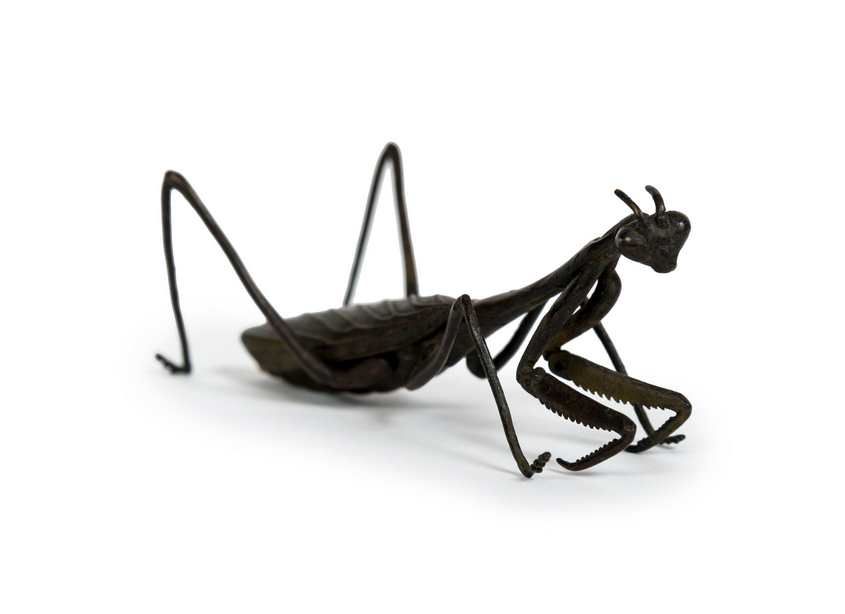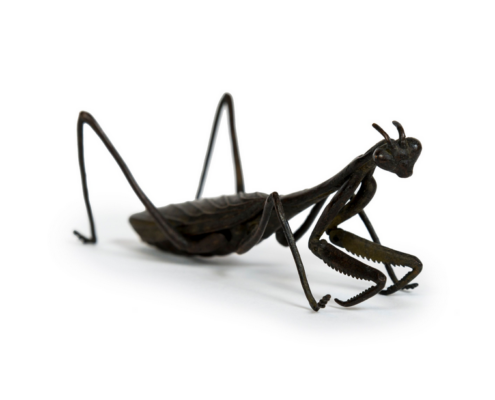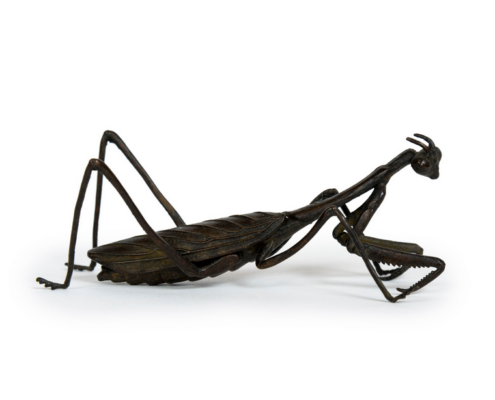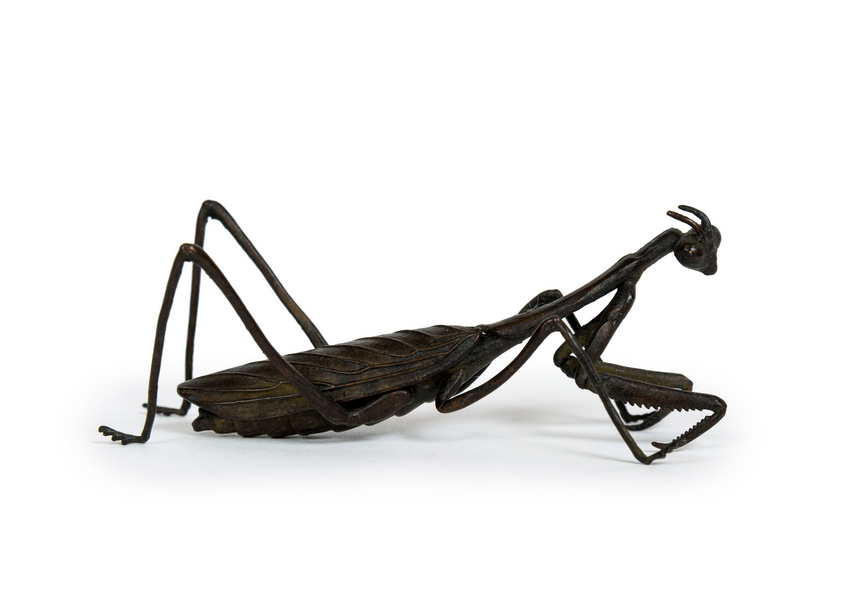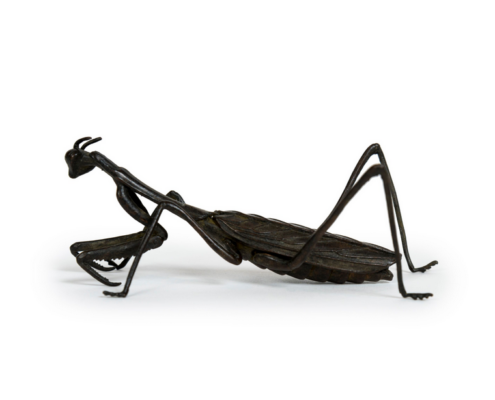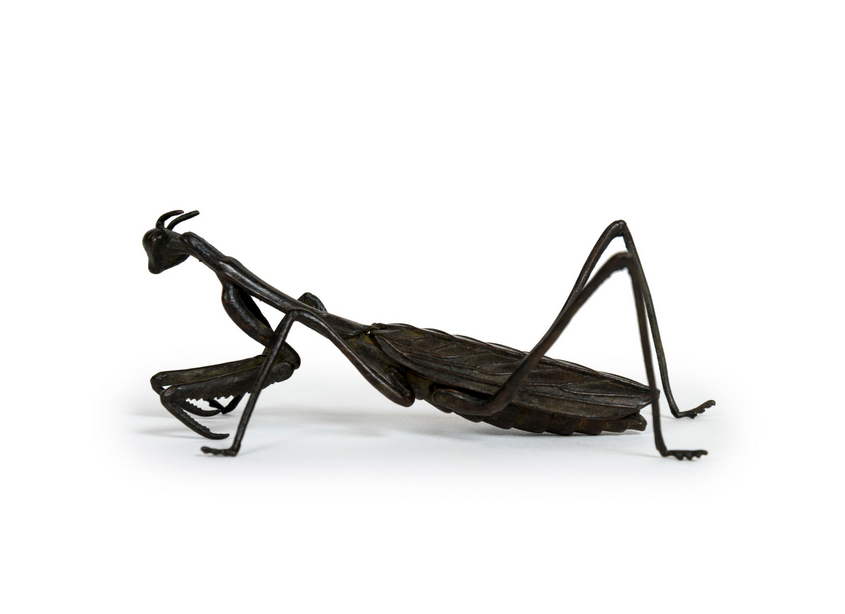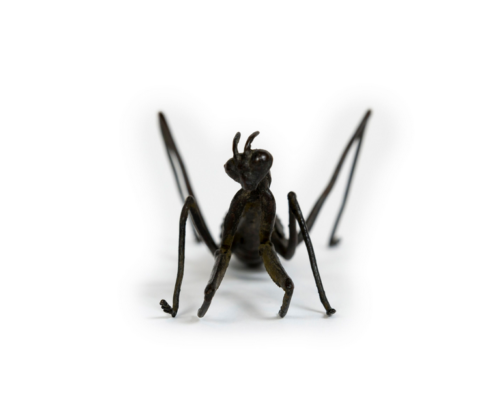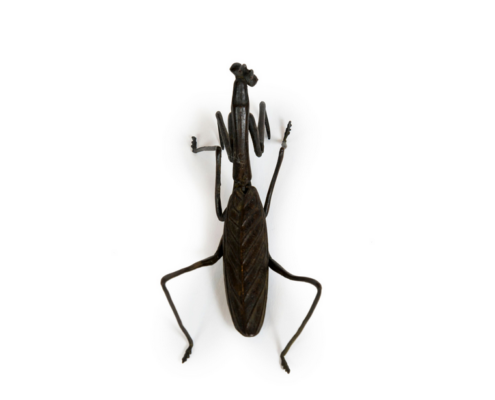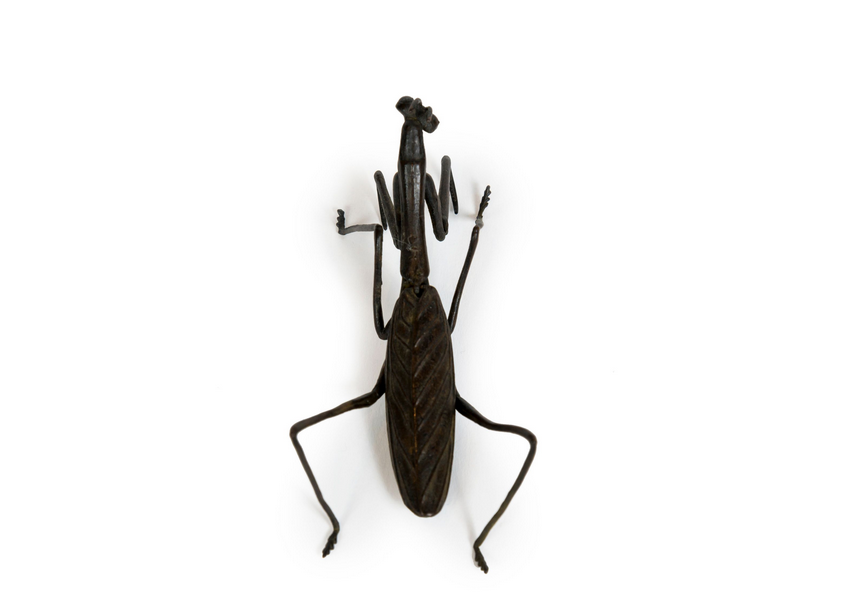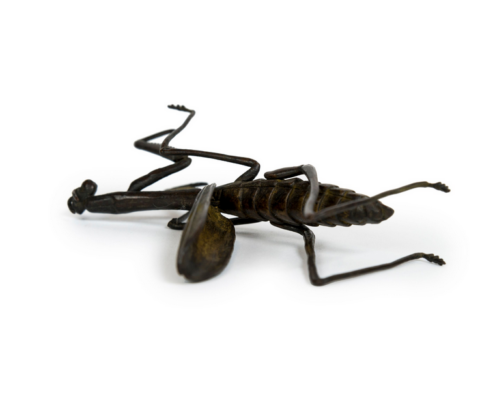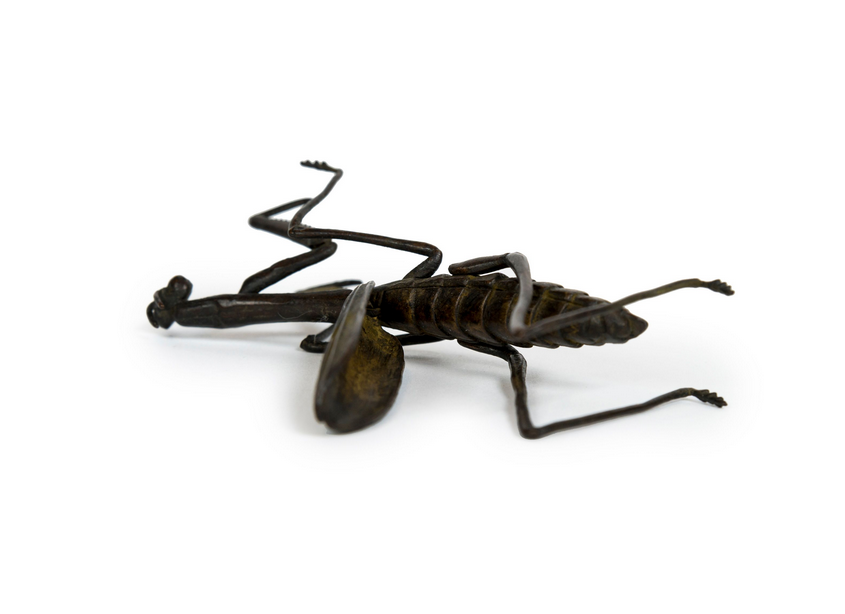BRONZE JIZAI OKIMONO OF A PRYING MANTIS – MEIJI
Reference: 2025-1350
Bronze Jisai Okimono sculpture of a praying mantis, partially articulated, deep brown patina. Both front legs and head are fixed in a rather realistic posture while the four other legs and the wing are movable. The praying mantis is a gracile but ferocious animal, since the Edo period it fascinated the ruling class of the feudal Japan, both a symbol of power and temperance. Jisai Okimonoare realistic sculptures of animals, particularly birds, fish, snakes, lobsters, crabs, insects(mushi)and fantasy animals. Their bodies and their members are articulated, and can be moved, exactly like for a living animal. This kind of okimono is not very well known because they were often exported since the Meiji period, and the Showa period.Insects (mushi) play an important rolein Japanese culture. Insect hunting is a popular pastime, especially among children. Using nets and cages, they catch cicadas, beetles and other insects for observation. In fact, mushican be seen as familiar animals, playing a role in a child’s education: at first, the child will play with the ladybug, progressing as his or her education progresses to the complex task of hunting dragonflies, which requires a certain amount of skill.
Japan –Meiji era (1868-1912)Height:3.5 cm-length:9 cm-width: 5 cm with its legs –1.5 cm with its abdomen only




